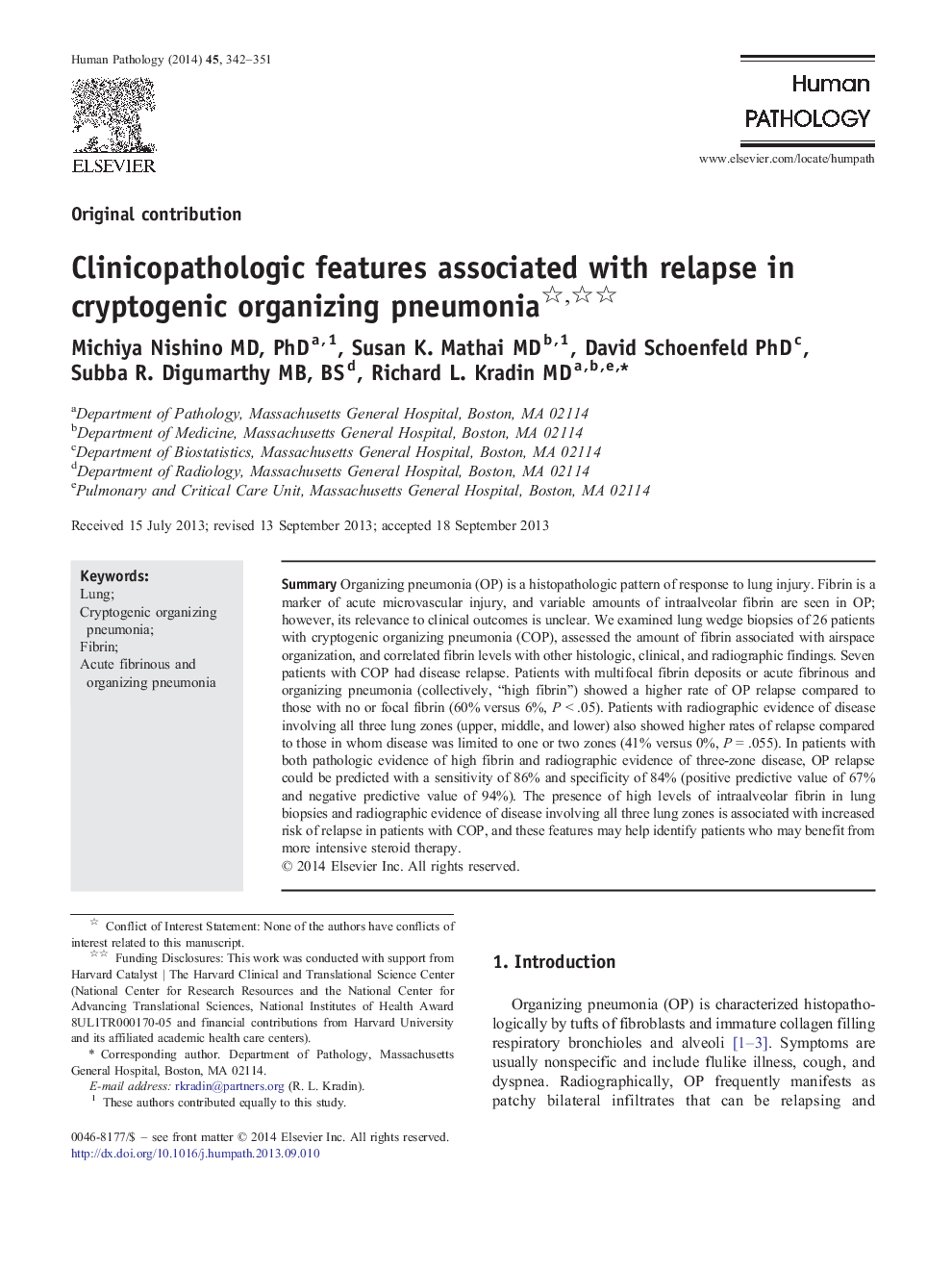| Article ID | Journal | Published Year | Pages | File Type |
|---|---|---|---|---|
| 4133259 | Human Pathology | 2014 | 10 Pages |
SummaryOrganizing pneumonia (OP) is a histopathologic pattern of response to lung injury. Fibrin is a marker of acute microvascular injury, and variable amounts of intraalveolar fibrin are seen in OP; however, its relevance to clinical outcomes is unclear. We examined lung wedge biopsies of 26 patients with cryptogenic organizing pneumonia (COP), assessed the amount of fibrin associated with airspace organization, and correlated fibrin levels with other histologic, clinical, and radiographic findings. Seven patients with COP had disease relapse. Patients with multifocal fibrin deposits or acute fibrinous and organizing pneumonia (collectively, “high fibrin”) showed a higher rate of OP relapse compared to those with no or focal fibrin (60% versus 6%, P < .05). Patients with radiographic evidence of disease involving all three lung zones (upper, middle, and lower) also showed higher rates of relapse compared to those in whom disease was limited to one or two zones (41% versus 0%, P = .055). In patients with both pathologic evidence of high fibrin and radiographic evidence of three-zone disease, OP relapse could be predicted with a sensitivity of 86% and specificity of 84% (positive predictive value of 67% and negative predictive value of 94%). The presence of high levels of intraalveolar fibrin in lung biopsies and radiographic evidence of disease involving all three lung zones is associated with increased risk of relapse in patients with COP, and these features may help identify patients who may benefit from more intensive steroid therapy.
